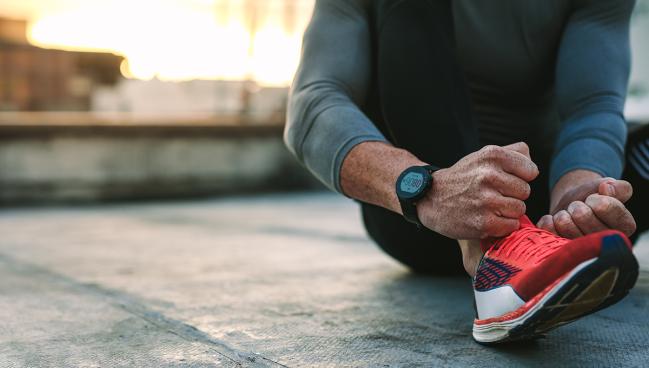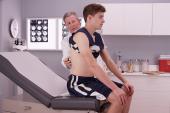Goal of Arrhythmia Care in Athletes is a Return to Play: HRS Consensus
While not every athlete can get back to their sport, a new “athlete-centered” statement says that should be the aim.

The new document, which was developed in conjunction with the American College of Cardiology, the American Heart Association, and the American Medical Society for Sports Medicine, among other professional bodies, was designed “to provide evidence-based and expert consensus recommendations on the diagnosis, treatment, and management of arrythmias in athletes of all ages, with an emphasis on shared decision-making.”
Rachel Lampert, MD (Yale University School of Medicine, New Haven, CT), who chaired the writing committee, said the “athlete-centered” consensus statement is aimed at facilitating a return to play for those with arrhythmias, if that is the desired outcome, whenever possible.
“Past documents have focused on if an individual with a specific heart condition can return to play or not, but we've focused on the how—how can we make that happen as often as possible,” Lampert told TCTMD. “It's not always possible. There are some conditions that may carry a risk that's prohibitive, but very often we are able to perform risk assessment and provide appropriate treatments in ways that decrease the risk significantly.”
The physician’s role here is to discuss the different treatment options, their associated risks, and ways to make a return to sports or activities as safe as possible, she added. That discussion includes ways that different medications or procedures might impact an athlete’s quality of life and sports performance.
“We’re really focused on getting the athlete back to the life they want to live,” said Lampert.
Who Is an Athlete?
The consensus statement, which applies to both adult and young people, adopts a broader definition of “athlete” than in prior clinical practice documents on sports eligibility. Here, an athlete is any person who regularly engages in “vigorous training” to reach a high level of fitness. While this includes “competitive athletes,” it can also include noncompetitive men and women who simply like to take part in regular, vigorous training for recreation or for health reasons.
Additionally, those employed in areas where they’re exposed to “regular and high cardiovascular stress” for work, such as those in law enforcement, fire departments, or the military, are considered “occupational” athletes.
Clinical guidelines around sports eligibility/disqualification have evolved over the years, with previous iterations addressing whether an athlete can return to play. They were historically binary—an athlete could or could not participate after a diagnosis of a specific condition—but that shifted with the 2015 American Heart Association/American College of Cardiology eligibility and disqualification recommendations for competitive athletes. Those guidelines adopted more nuanced recommendations and a shared decision-making focus.
The new HRS consensus statement is focused on treating the arrhythmia and the subsequent evaluation of those treatments, which includes stress testing these patients in ways that mimic their sport. Additionally, there are more general considerations, including the recommendation that athletes be evaluated by doctors who understand the electrical and structural adaptations that occur with high-level physical activity. Expertise in arrhythmia suppression is a key part of care, particularly regarding how the various options might impact an individual’s performance.
We’re really focused on getting the athlete back to the life they want to live. Rachel Lampert
Athletes with an inherited arrhythmia syndrome, such as long QT syndrome, Brugada syndrome, and catecholaminergic polymorphic ventricular tachycardia (CPVT), all of which have been linked to sudden deaths in athletes, should be assessed by an expert in genetic cardiology and care should be guided by shared decision-making (class 1 recommendation, level of evidence C). While an implantable cardioverter-defibrillator (ICD) may be part of disease-specific treatment for some conditions, the experts note that getting an ICD for the sole purpose of getting back to sport is potentially harmful and shouldn’t be done for athletes with these inherited syndromes (class 3, level of evidence C).
HCM and Long QT Syndrome
Athletes with inherited cardiomyopathies, such as hypertrophic cardiomyopathy (HCM), arrhythmogenic cardiomyopathy (AHM), and dilated cardiomyopathy (DCM), have historically been restricted from competitive sports participation because of the perception of heightened risk. However, the guidelines are starting to recognize that some people diagnosed with these cardiomyopathies can return to play.
For athletes with a genetic confirmation of HCM who are phenotype-negative, “there’s no data to support exercise restrictions,” say the experts. In fact, return to play, in conjunction with an expert assessment, is recommended. For those who pick up their sport again, close follow-up and ongoing risk stratification is emphasized. If there is evidence of LV hypertrophy (phenotype-positive), participation in competitive sports “is reasonable with appropriate therapy and an emergency action plan, including access to an AED” (class 2a, level of evidence B).
Lampert led the recent LIVE-HCM observational study that found no significantly elevated risk of arrhythmic events in HCM patients who engaged in vigorous exercise. A parallel study, LIVE-LQTS, showed similar results.
“Long QT syndrome is the most common electrical disease and hypertrophic cardiomyopathy is the most common genetic heart muscle disease,” Lampert said. “What we saw in both of those studies was that the individuals who were exercising vigorously, and even competitively, did not have a higher risk of an arrhythmic event over follow-up. It's not that no events ever occur during exercise, but rather the overall risk did not differ.”
In terms of complete no-go scenarios, Lampert said there are two situations where the risk of exercise may be prohibitive. With some genotypes of arrhythmogenic right ventricular cardiomyopathy (ARVC), for example, vigorous exercise, particularly endurance exercise, can worsen progression of the disease. The second situation arises when the arrhythmia is not yet adequately suppressed.
“You really need to wait until you have gotten the arrhythmia under control before the athlete goes back to play,” she said.
The HRS consensus document also lays out recommendations for emergency action planning for sudden cardiac arrest (SCA) as well as prevention strategies for athletes with inherited cardiomyopathies, channelopathies, conduction abnormalities, and other congenital conditions that put them at a higher risk for SCA. In the event an athlete collapses and isn’t responsive, SCA “should be presumed and acted upon until proven otherwise.”
Michael O’Riordan is the Managing Editor for TCTMD. He completed his undergraduate degrees at Queen’s University in Kingston, ON, and…
Read Full BioSources
Lampert R, Chung EH, Ackerman MJ, et al. 2024 HRS expert consensus statement on arrhythmias in the athlete: evaluation, treatment, and return to play. Heart Rhythm. 2024;Epub ahead of print.
Disclosures
- Lampert reports honoraria from Medtronic and research grants from Boston Scientific, MediLynx, and Medtronic.





Comments